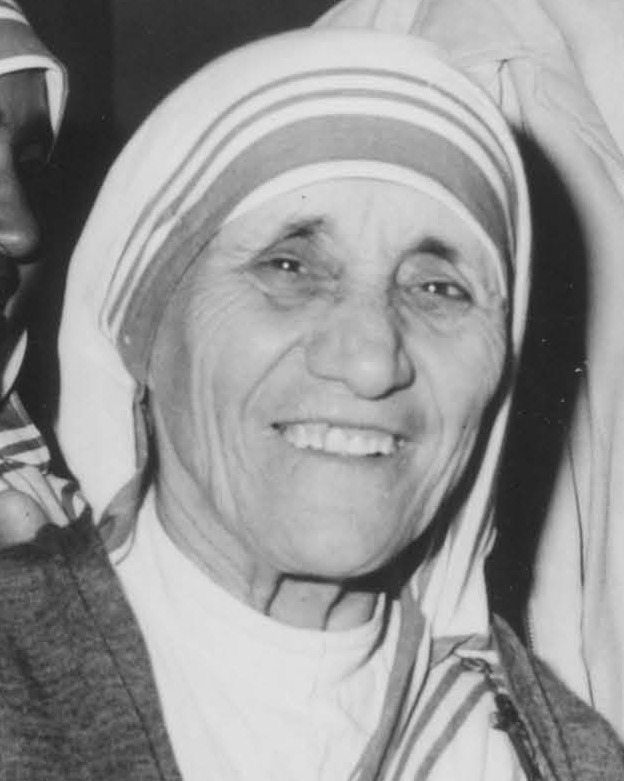
Servant of the Poorest of the Poor, Foundress, Nobel Peace Prize Winner
St. Mother Teresa of Calcutta
Mother Teresa is one of the most beloved and renowned figures of our time. Her love for Jesus and the poor has inspired millions to serve the needy and to follow her directive to “do little things with great love.” She was born as Agnes Gonxha Bojaxhiu to an Albanian grocer in Macedonia, formally known as Yugoslavia, and was the youngest of three children. She became involved in a youth group at her local parish, and there she began to cultivate a love for missionaries. At the age of 17, she first felt the vocational call to become a Catholic missionary nun. She entered the Sisters of Loretto, an Irish community known for their missionary work in India. There she received formation and professed first vows, choosing the name Teresa after St. Thérèse of Lisieux, the Little Flower.
During her time in Calcutta, Mother Teresa taught catechism and geography to young girls at St. Mary’s High School, where she later became principal. In 1946, during a train ride from Calcutta to Darjeeling, Mother Teresa received what she called, “the call within a call.” The Lord asked her to begin a new religious community that would live and work with the poorest of the poor. After two years of discernment, Mother Teresa received permission to found a new community, the Missionaries of Charity, which was officially established in 1950. She walked through the slums visiting families, washing the sores of children, and caring for the sick and dying who lay on the side of the road. After receiving Christ in Holy Communion, she went out to receive Him again in the unloved and unwanted, armed with her rosary. Gradually, she was joined by her former pupils who shared the same desire to serve. Her community grew from twelve sisters to thousands of missionaries, with centers springing up around the world. Mother Teresa referred to each new convent that was opened as a “Tabernacle” in which Jesus could live and be loved and served. She also created homes for the dying, and was one of the pioneers to first establish homes for AIDS victims.
“I have found the paradox that if I love until it hurts, then there is no hurt, but only more love.”
Through her service, Mother Teresa gained public esteem and won several humanitarian awards, including the Nobel Peace Prize in 1979. But such fame wasn’t important to Mother Teresa, who promptly asked that the prize funds be donated to the poor in Calcutta. “At the end of our lives,” she said, “we will not be judged by how many diplomas we have received, how much money we have made, or how many great things we have done. We will be judged by, ‘I was hungry and you gave me to eat. I was naked and you clothed me. I was homeless and you took me in.’” Mother Teresa died in 1997, and her tomb at the Motherhouse of the Missionaries of Charity continues to be a place of pilgrimage for people from all walks of life. At the time of her death, the Missionaries of Charity had grown to almost 4,000 members with 610 foundations in 123 countries around the world.
Feast Day: September 5

